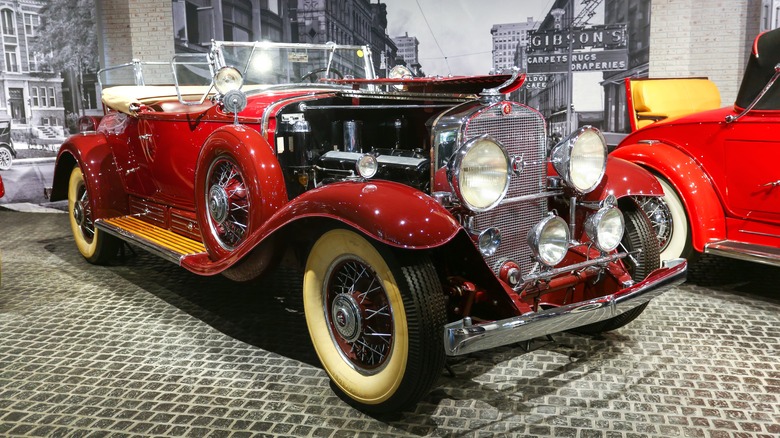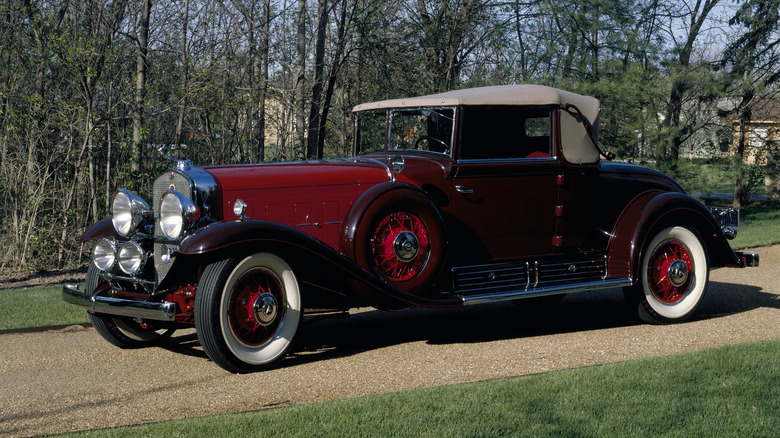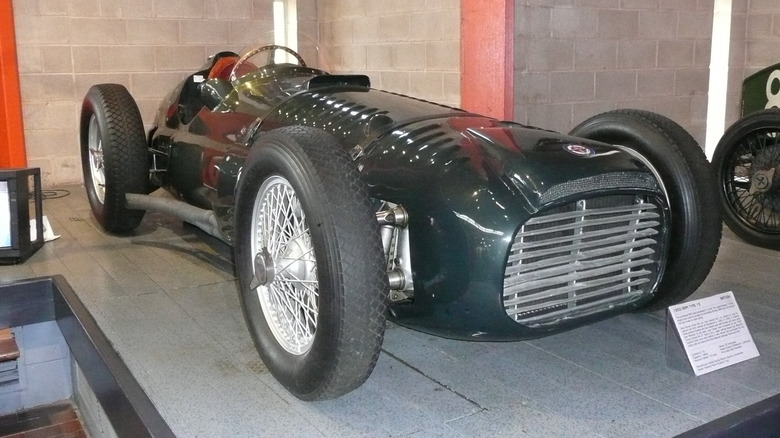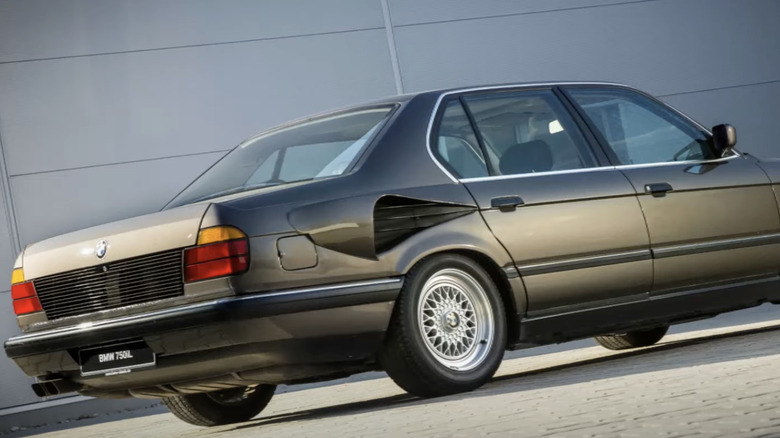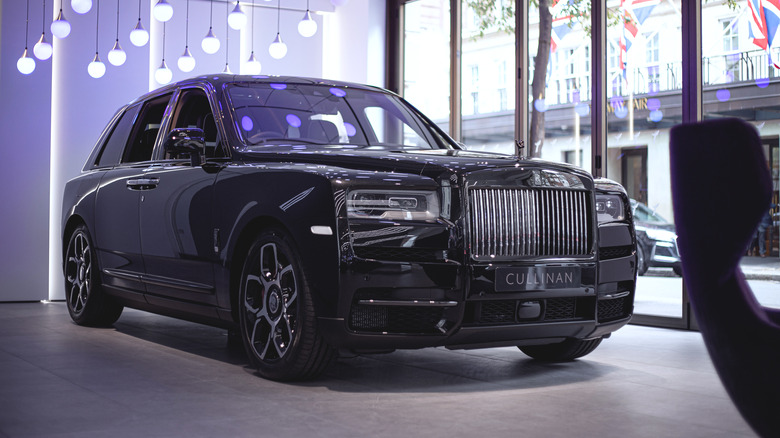What Cars Have A V16 Engine Under The Hood & Why Are They Not Used More Often?
Automotive technology has come a long way since Carl Benz used a single-cylinder engine to power the first car ever invented in the late 19th century. The T-4 four-cylinder engine used in the Ford Model T was a big step in moving carmakers to four-stroke engines, and V8 engines became commonplace during the muscle car era of the 1960s and early '70s. V8s are still common and are among the most powerful engines in use today. For example, the Koenigsegg Jesko Absolut relies on a twin-turbo 5.0-liter V8, and Chevy has turned out an impressive selection of beefy big-block V8s.
With the auto industry's reliance on the V8 format, it's natural to wonder why manufacturers haven't decided to double up and produce V16 engines. V16s have been used throughout automotive history, though sparingly because it's basically possible to get the same power out of an engine with fewer cylinders for less cost and more efficiency. V-configuration engines are essentially built by combining two straight banks of cylinders, and straight-eight motors aren't as common as V8s, I4, or I6 engines. That makes V8 and V12 engines easier to design and produce than V16s, and explains why there are a few more W16 engines than V16s. Despite their rarity, V16s have made a few memorable appearances over the years.
Cadillac used V16s in the 1930s
One of the first cars to use a V16 engine was the 1929 Maserati Tipo V4, which used two 26B straight-eight engines connected by a crankcase that housed two crankshafts. The two banks of cylinders were given their own ignition systems, carburetors, and superchargers, and together, they could produce more than 300 horsepower. Top speed for the Tipo V4 was 162 mph — an astonishing (and dangerous) figure for a time when safety features were virtually unheard of.
Cadillac employed a similar design in 1930 with the 452 luxury roadster shown above, but it left off the twin superchargers. The 452 got its name from its engine's displacement in cubic inches, which equals a smidge above 7.4 liters. The Marmon Motor Company responded to Cadillac's move in 1931 with its Sixteen, which used a similar engine design and stayed in production until the automaker went out of business in 1933. Cadillac updated its V16 in 1938 for the Series 90, moving the valves from the heads to the cylinders and mounting the engine's halves at a 135-degree angle. The Series 90 V16 cost over $5,000, which equates to more than $110,000 today.
V16 engines have been used in racing
While use of the V16 engine format was limited in production models, V16s were used in Grand Prix cars of the 1930s like the Auto Union Type A-C and Alfa Romeo Tipo 316. Auto Union was a joint effort from Audi, Horch, Wanderer, and DKW, and the group enlisted Ferdinand Porsche to design its first race car. Porsche used a V16, implementing narrow-bore cylinders to keep the engine shorter than his competitors' V8s.
The 500-pound engine made its debut in the 1934 Type A with output of 295 horsepower and almost 400 pound-feet of torque. By 1936, the Type C V16 had been bored out to more than six liters, upping power numbers to 520 horsepower and 630 pound-feet of torque. That engine helped Bernd Rosemeyer win that year's European Driving Championship.
In 1951, during the second year of Formula 1 racing, British Racing Motors (BRM) built the V16-powered P15, which got its name from the 1.5-liter displacement that was the upper limit for F1 engines at the time. The P15 had twin superchargers that provided a combined 72 pounds per square inch of boost and upped output to nearly 600 horsepower. Juan Manuel Fangio drove one faster than 190 mph at the 1953 Albi Grand Prix. However, while the P15's power output was impressive, the engine was not reliable. Fangio qualified on pole position, but his car failed to complete the 18-lap race that covered less than 100 miles.
BMW built a prototype 7-series with a V16
Sadly, two of the most enticing V16 engines never made it to production. In 1987, BMW engine development boss Karlheinz Lange had his team graft two extra cylinders onto each bank of their existing V12, making a 402-horsepower V16. The next year, the carmaker dropped that 6.7-liter engine in an E32 series 750iL, cutting vents in the rear fenders to feed air to the radiator, which had been moved to the trunk to make room for the extra four cylinders.
The gill-like cutouts gave the prototype the nickname "Goldfisch" (goldfish), but it was flushed by BMW before it saw a showroom. In 2003, Cadillac paid homage to its V16 past with the Sixteen concept car, a 5,000-pound behemoth with a 13.6-liter V16 capable of 1,000 horsepower and 1,000 pound-feet of torque. That engine featured a now-common technology that deactivates cylinders when they're not needed, and the car now lives at the Audrain Auto Museum in Newport, Rhode Island.
A few other cars with V16s never really got rolling. The Cizeta-Moroder V16T actually went into production briefly in 1991, but only about 10 were made before Cizeta went under. Around the time BMW and Cizeta were working on their V16s, Mercedes-Benz also reportedly built about 85 prototype cars with V16 engines. Finally, Rolls-Royce made the V16-powered 100EX in 2004, but that car was an experimental model built solely as a test platform for new systems.
A V16 could be coming in the near future
The absence of V16 engines in commercially available models is primarily due to their design complexity and the cost of manufacturing these monsters. Mercedes dropped plans for a late-'80s V16 S-class due to fuel consumption and environmental concerns. Fast forward to the 2024 model year and Corporate Average Fuel Economy standards are at 49 miles per gallon, making more efficient V8 and V12s a more plausible option for most automakers. Cars also need to be smaller and lighter to clear that bar, and technology like variable valve timing and the increased use of turbochargers means manufacturers can squeeze more power out of smaller engines.
Don't start the eulogy for 16-cylinder engines just yet, though, as some automakers haven't given up hope that the V16 could work in modern day cars. Bugatti melded two Volkswagen 4.0-liter V8 engines together to make the W16 motor it first used in the 2005 Veyron. That engine produced as much as 1,600 horsepower in the Chiron Super Sport and stayed in use through 2022.
Bugatti is also working with Cosworth on a new V16 that will serve as the base for a hybrid powerplant that is intended for its next hyper car. As of this writing, the details were murky. However, Bugatti did post on its website promising that the forthcoming model "is a pure embodiment of Bugatti's DNA, created not just for the present, or even the future — but Pour l'eternité" (for eternity).
